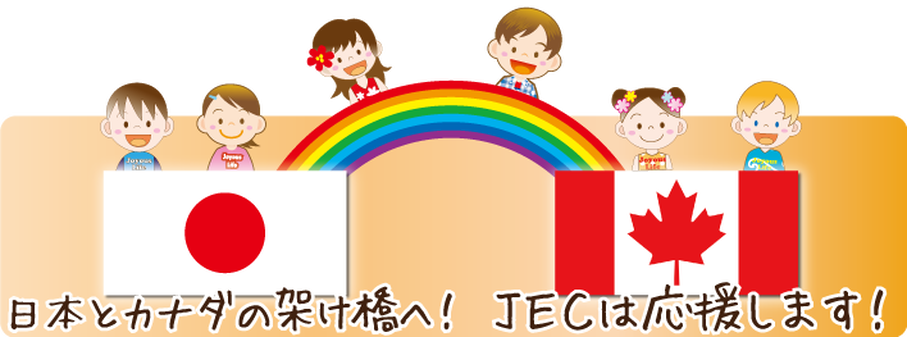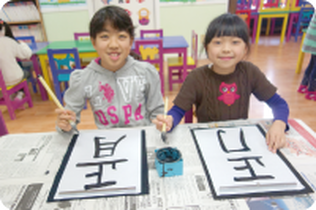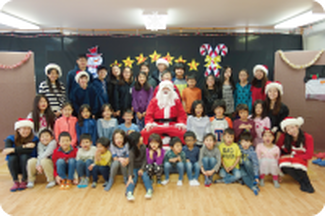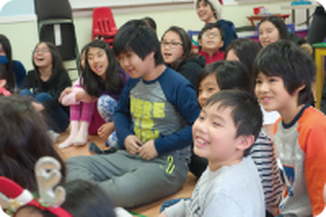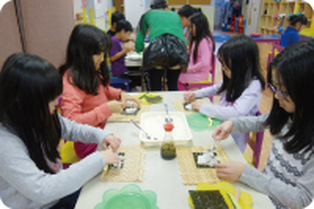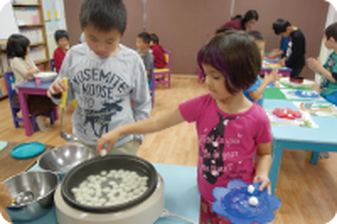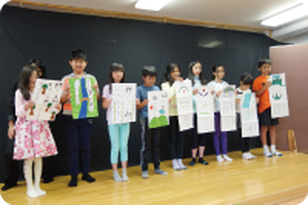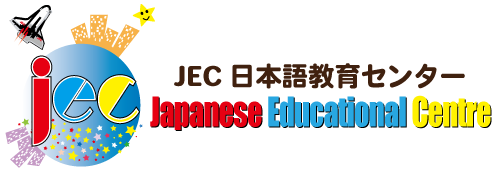基礎科クラス
Learning Japanese Should be an Enjoyable Experience for your Children
Japanese fundamental class is for those who do not speak Japanese at home. Our goal at JEC is to create an environment for children to enjoy learning Japanese and understand the beauty of Japanese culture. We hear of many students who feel stressed out due to a lack of understanding Japanese, which results in them not wanting to attend class. We personally believe children grow in a fun learning environment where they don't feel scared or shy, instead they feel positive towards the language and grow confidence in themselves. Our classes are conducted in both English and Japanese and we heavily encourage the children to speak more for added practice. Lastly, all of our classes are centered around a fun learning environment and our students always leave with smiles on their faces.
Class Levels
Classes are divided into 6 levels with an Intermediate level class for those that want to continue their Japanese learning. Classes are divided into two groups with levels 1/2/3 in on and levels 4/5/6 in the other.
Class levels are not separated by age but by the individual's language skill. Students who are keen to learn and develop their Japanese are encouraged to pursue the next level after completing a proficiency exam. Proficiency exams need to be taken and passed to advance to the next level. For individuals that want to learn at a little bit slower pace can retake levels until they are comfortable proceeding to the next level.
Level 1
Kindergarten Students - Introduction to Hiragana
Level 2
Students are able to write all of the Hiragana characters
Level 3
Students can write Hiragana and Katakana and are able to voice consonants and contract sounds
By the end of level 3, the goal is to be able to say the following: Greetings, introductions, days of the week, months, the date, weather, time, colours, colour + nouns, count and read numbers from 1 to 1000, 16 verbs, say and use a full sentence with those 16 verbs, and know 176 vocabulary words.
Level 4
39 Kanji
Level 5
75 Kanji
Level 6
100 Kanji
From level 4, there is a heavier emphasis on reading and writing. Students will be challenged to make more structured sentences using particles in both past and present tense. 80 new verbs will be introduced to the students and they will learn how to count various things in Japanese (Certain objects are counted in a specific way in Japanese).
Once students pass their level 6 exam and enter the intermediate class, we begin teaching and studying for the Japanese Language Proficiency Test. This test ranges from N5 to N1 with the former being the introductory level and the latter being an advanced level of Japanese.
Annual Class Events
Class levels are not separated by age but by the individual's language skill. Students who are keen to learn and develop their Japanese are encouraged to pursue the next level after completing a proficiency exam. Proficiency exams need to be taken and passed to advance to the next level. For individuals that want to learn at a little bit slower pace can retake levels until they are comfortable proceeding to the next level.
Level 1
Kindergarten Students - Introduction to Hiragana
Level 2
Students are able to write all of the Hiragana characters
Level 3
Students can write Hiragana and Katakana and are able to voice consonants and contract sounds
By the end of level 3, the goal is to be able to say the following: Greetings, introductions, days of the week, months, the date, weather, time, colours, colour + nouns, count and read numbers from 1 to 1000, 16 verbs, say and use a full sentence with those 16 verbs, and know 176 vocabulary words.
Level 4
39 Kanji
Level 5
75 Kanji
Level 6
100 Kanji
From level 4, there is a heavier emphasis on reading and writing. Students will be challenged to make more structured sentences using particles in both past and present tense. 80 new verbs will be introduced to the students and they will learn how to count various things in Japanese (Certain objects are counted in a specific way in Japanese).
Once students pass their level 6 exam and enter the intermediate class, we begin teaching and studying for the Japanese Language Proficiency Test. This test ranges from N5 to N1 with the former being the introductory level and the latter being an advanced level of Japanese.
Annual Class Events
- September: Making dango for the moon light festival (tsukimi)
- October: Halloween
- December: Year End Party
- January: Mochi and Japanese New Years event
- February: Setsu-bun (Oni wa soto game, make sushi rolls)
- March: Girls Day, Hinamatsuri
- April: Shopping experience in Japanese
- May: Children's day (Koinobori) Class outdoors
- June: Graduation and Children's Performance

